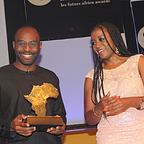Impact Brain
Encoding the Self-Correcting Decision-Making Architecture in Technology
by Bunmi Otegbade, Dr. Ignacio Perez Hallerbach and Dani Matielo
Diary Entry: 30 April 2022
Say you are observing a ball roll down the road. How do you know where it might land? What you observe in its direction and pace of acceleration will tell you its most likely future position. These observations feed how self-corrective systems like self-driving vehicles predict position, decide what adjustments to make, and implement necessary corrections. Similarly, Ashoka learns from the practices of its decentralized but networked 3,700 leading social entrepreneurs who tackle the most complex societal challenges, the direction and pace of social innovation, and anticipates the ways societies will develop across the globe to better understand cumulative effects. This deductive process yields new “Purposes” — paradigmatic lines along which humanity can collectively build an Everyone a Changemaker world, a world where everyone is empowered to create change for the good for all.
This rare brain-like expertise Ashoka has developed emanates from close proximity to a network of thousands of Fellows, hundreds of social impact networks, all making decisions all the time. These decision-making networks are well-connected, and Ashoka’s method of sense-making and insights-drawing can be quite granular. However, the sheer volume of information utilized within the decision-making network could limit scale and may introduce lag in sense-making and dissemination of real-time insights. This presents an opportunity for broader, quicker, more open access to impact based decision-making networks, enabled by advanced digital technologies such as AI. We have termed this new opportunity “Impact Brain,” a super network to synthesize knowledge and decision-making capability to enable Changemakers around the world to distill knowledge from practice efficiently and in real-time.
Using principles of open sourcing, peer-based communities, decentralization, and equity and diversity, can we articulate a self-correcting decision-making architecture and encode it in technology? The architecture may helps us to:
- find the locus/vanguard of change/direction in the world: The SDGs have tried to define a locus and direction of change in the world. Could a super architecture of collective intelligence support humanity to more quickly find and articulate that locus?
- improve shared understanding of what impact is, what change needs to occur, and what best practices might help achieve desired change, and build a level of consistency in collective action. For example, which view best influences the change we want to see in the equitable distribution of global nutritional needs? “Agriculture” or “Food” or “Calories”?
- suggest best practices: Could we leverage this decision-making architecture and access to existing online landscapes to mass customize the practices of hundreds of thousands of communities and organizations with the goal of achieving the 2030 SDGs?
- attribute impact: The revolution in blockchain-based peer-to-peer systems may provide new ways to identify where a granular measure of impact is derived, and potentially help minimize unintended consequences of good intentions.
We believe this future is possible today. We also believe that advanced digital tools can amplify the social impact that Ashoka, its community of Fellows, and other social innovators create in a world that works for the good of all. Impact Brain could also consolidate Ashoka’s role as a field catalyst, enabling Ashoka to fully realize its influence capacity on innovators around the world.
Our initial exploration yielded the first design dimensions shown below, rooted in existing technology. While these dimensions may evolve, they give us a first shape to a future solution. Further, the metaphors of “Castle on a Hill” and “Impact Brain” describe the significant shift between solutions attempted in the past and the envisioned future.
The rough shape of the Impact Brain idea also led to a first high-level architecture of what a technical solution could look like, shown in Figure 1 below.
Figure 1: Impact Brain — initial technical architecture
Through the impact brain model, the right insights would be presented to the right person at the right time — knowledge assets are organized and reorganized according to the context and presented to the end users using platforms openly accessible, triggered by external events and behaviors. This real-life presentation of insights will enable live impact data to be presented in an empowering and meaningful way to both the everyday changemaker and key decision-makers.
It may be important to note that the Impact Brain concept does not imply full and open access to all of Ashoka’s knowledge. Rather, we posit that granular but managed access to Ashoka’s knowledge can strike the balance of access for the purpose of decentralized social innovation and protection of Ashoka’s core assets.
As we explore this radical Impact Brain concept further, we invite constructive feedback and hope to build a coalition with thought leaders in the fields of social impact, deep technology and academia.
